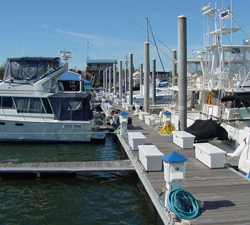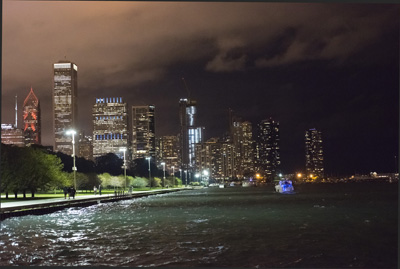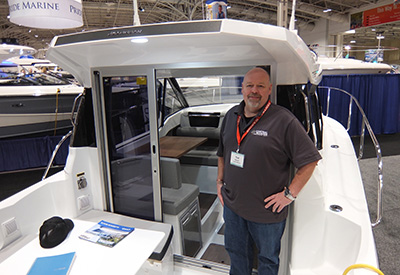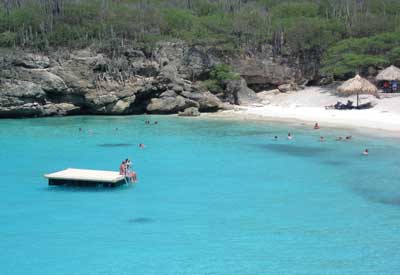The Crinan and Caledonian – Canals of Scotland
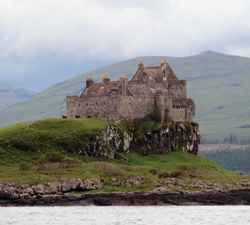
By Sheryl and Paul Shard
Aboard Distant Shores II
 Paul and I seem to love the extremes of cruising – long ocean passages where our skills and stamina are tested followed by lots of gunkholing where we poke along exploring creeks, rivers, cuts and canals to gain insight into the heartland of our destination.
Paul and I seem to love the extremes of cruising – long ocean passages where our skills and stamina are tested followed by lots of gunkholing where we poke along exploring creeks, rivers, cuts and canals to gain insight into the heartland of our destination.
Boating began for both of us on the Trent-Severn Waterway in Ontario and after setting sail for foreign ports in 1989 we have travelled through numerous canals including the Erie Canal and Intracoastal Waterway of the USA, the Corinth Canal in Greece, the Suez Canal in Egypt, the canals of Venice (a personal favourite), the Kiel Canal in Germany, and on our summer 2010 cruise the Göta Canal across Sweden.
At the time the Göta Canal was constructed in the 1800s, the Scots were the world leaders in canal building and Scottish engineer, Thomas Telford, was brought in as a consultant. One of his greatest achievements in his homeland was the 50 nm long Caledonian Canal that cuts through the Great Glen across Scotland from Fort William on the west coast to Inverness on the east coast. So as lovers of inland waterways and canals, it just made sense to include a couple of canal trips in Scotland while exploring this country on our way north to Norway last summer.
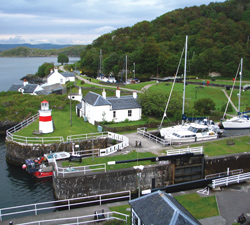 We’d be coming to Scotland from Bangor on the northeast corner of Northern Ireland where just a daysail across the strait lies the Firth of Clyde (a firth is a large bay) and the Mull of Kintyre (mull means headland) made famous by Paul McCartney’s song of the same name. The Kintyre Peninsula is a long dangly peninsula that adds miles to go around if you’re heading north and the seas at the Mull can kick up nastily in bad weather.
We’d be coming to Scotland from Bangor on the northeast corner of Northern Ireland where just a daysail across the strait lies the Firth of Clyde (a firth is a large bay) and the Mull of Kintyre (mull means headland) made famous by Paul McCartney’s song of the same name. The Kintyre Peninsula is a long dangly peninsula that adds miles to go around if you’re heading north and the seas at the Mull can kick up nastily in bad weather.
To improve shipping and safety at sea, the Crinan Canal was completed in 1801 to cut through the neck of the Kintyre Peninsula from Ardrishaig on the southeast side of the peninsula to Crinan on the northwest side. Here you can continue north along the Scottish coast in the protection of the cruising paradise of the western islands all the way to the top of Scotland around Cape Wrath and head north to the Orkney and Shetland Isles en route to the North Sea and Norway.
Another option is to turn right at the Isle of Mull and travel through Loch Linnhe to Fort William and enter the Caledonian Canal which cuts through some of the most breathtaking scenery Scotland has to offer.
 We wanted to do it all so decided to transit the two canals on our way north (in the spring) when the weather would be more unsettled and the canals less crowded. On our way south from Norway (at the end of the summer) we’d round Cape Wrath and sail down the entire west coast of Scotland enjoying the numerous small islands and anchorages to be found there.
We wanted to do it all so decided to transit the two canals on our way north (in the spring) when the weather would be more unsettled and the canals less crowded. On our way south from Norway (at the end of the summer) we’d round Cape Wrath and sail down the entire west coast of Scotland enjoying the numerous small islands and anchorages to be found there.
We set sail from Bangor with a fresh breeze from the WNW, which meant a nice wind on the beam. We swept along under clear sunny skies (rare), but it was cold on the water and we were dressed in full foul weather gear – sadly, our summer clothing for most of the voyage.
We headed for the marina at Troon, 65 nm away in the Firth of Clyde and accessible to the airport in Glasgow where Canadian friends Peter and Jill Schaffner were flying in to join us for a week. The wind went up and down, sails came in and out, and the motor went on and off as conditions came and went throughout the day. But the characteristic landmark of the ancient volcanic plug of Ailsa Craig in the Firth rose up into view just when it should have and by dinnertime the boat was berthed and we were enjoying a fine seafood meal with Scottish sailing friends, Stuart and his fiancee, Moira, who had driven from Edinburgh to see us. The friends you make sailing are special friends and even though we hadn’t seen Stuart for nearly 13 years, we’d kept in touch and it was as though no time had gone by. A nice welcome to Scotland!
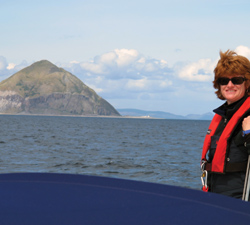 Peter and Jill arrived the next morning and after a quick grocery outing and a day of catching up on news and the mail they’d brought us from home, we set off the following day across the Firth of Clyde in the company of dolphins and a naval submarine (the Firth is an exercise area) headed for the Isle of Bute, the ancestral home of the Stuart kings. After a lunch stop at Millport we circumnavigated the island through the Kyles of Bute, narrow sounds between the island and mainland. It was a lovely sail on flat seas past purple hills covered in masses of rhododendrons.
Peter and Jill arrived the next morning and after a quick grocery outing and a day of catching up on news and the mail they’d brought us from home, we set off the following day across the Firth of Clyde in the company of dolphins and a naval submarine (the Firth is an exercise area) headed for the Isle of Bute, the ancestral home of the Stuart kings. After a lunch stop at Millport we circumnavigated the island through the Kyles of Bute, narrow sounds between the island and mainland. It was a lovely sail on flat seas past purple hills covered in masses of rhododendrons.
Also on the recommended list for this leg of the was the small picturesque fishing port of Tarbert on Loch Fynne on the Kintyre Peninsula just a few miles south of the entrance to the Crinan Canal. We were not disappointed. There is a small castle ruin overlooking the harbour and before setting off for Ardrishaig where we’d enter the Crinan Canal we climbed up to the castle and took in the views of the surrounding hills, bays and the tarbert, or isthmus.
The Crinan Canal is known as Britain’s most beautiful shortcut since it cuts off the often treacherous journey around the Mull of Kintyre where you still manually operate lock gates built in 1801. The sea locks at each end and Lock 14 in Crinan are the only ones modernized and operated by lockkeepers; bridgetenders open swing bridges with a hand crank that moves Frankenstein-like gears sliding the bridges out of your way.
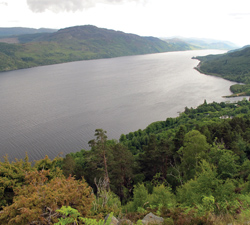 After locking through the sea lock, Suzie and her sister, Helen, the two lockkeepers on duty guided us to the first manual lock which they referred to as the “training lock” where we learned how to open the sluices and operate the locks. These two women were a delight. They were fourth generation lockkeepers. Their great grandmother was the first woman lockkeeper on the system.
After locking through the sea lock, Suzie and her sister, Helen, the two lockkeepers on duty guided us to the first manual lock which they referred to as the “training lock” where we learned how to open the sluices and operate the locks. These two women were a delight. They were fourth generation lockkeepers. Their great grandmother was the first woman lockkeeper on the system.
There are 15 locks and seven bridges on the Crinana Canal. It is only nine miles long so you can do the whole thing in under six hours but we planned for a couple of days since there are cute towns to visit and pleasant footpaths and bike trails leading to interesting historic sites in the rolling countryside that we wanted to enjoy.
We popped out of the Crinan Canal at the town of Crinan on Sunday June 5. We’d had the best weather of the whole summer for our transit, the only time we sported shorts and t-shirts. However, as we entered the Bay of Crinan, the sky clouded over and the characteristic fine drizzle began and stayed with us all the way to Oban, the main town and transportation hub on this part of the Scottish coast.
We continued north through the protected seas between the network of islands on this section of the coast sailing past Duart Castle, the ancestral home of the Macleans, and stopping at the colourful fishing port of Tobermory on the Isle of Mull before continuing up the long narrow Loch Linnhe past Fort William to enter the Caledonian Canal at Corpach. We lucked out with a clear beautiful sunny day so could see the top of Ben Nevis, the tallest summit in the UK at 1,344 metres (4,409 ft.) above sea level. Ben Nevis means “mountain with its head in the clouds” so we saw it on a rare day that offered clear skies and dry weather.
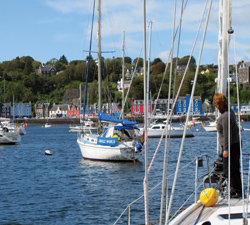 The Caledonian Canal was built in the early 19th century by Scottish engineer Thomas Telford and was conceived as a project to create employment in the depressed area of the Scottish Highlands suffering from the Highland Clearances that left many residents homeless and jobless. Many people emigrated to Canada and the Scottish lowlands at this time.
The Caledonian Canal was built in the early 19th century by Scottish engineer Thomas Telford and was conceived as a project to create employment in the depressed area of the Scottish Highlands suffering from the Highland Clearances that left many residents homeless and jobless. Many people emigrated to Canada and the Scottish lowlands at this time.
The canal was a massive undertaking that took nearly 20 years to complete, 12 years longer than planned; it opened in 1822. The canal is 50 nm long (60 statute miles or 100 km) and runs from northeast to southwest across the top of Scotland through the Great Glen, a huge valley created by a geological fault in the earth’s crust. Only one third of the entire length of the canal is man-made, the rest being formed by natural freshwater lakes or lochs: Loch Lochy, Loch Oich, Loch Ness (of Loch Ness monster fame) and Loch Dochfour. There are 29 locks and 10 swing bridges all operated by the canal staff – a real breeze after the do-it-yourself Crinan Canal.
Like the staff working on the Crinan Canal, the lockkeepers and bridgetenders operating the Caledonian Canal are real gems. They do cartwheels to make you feel comfortable and confident in the locks. The start at Corpach can be a bit unnerving since your challenge for the day is the famous Neptune’s Staircase, a flight of nine locks back-to-back, the largest flight of locks in the UK. Turbulence can be strong and taking a boat through with just two people on board can be taxing. At least three people are recommended.
You can do the Caledonian Canal in two days but our attitude is why rush? We took our time enjoying the spectacular mountain scenery, the lockside towns, especially Fort Augustus where we did some day hikes along Loch Oich and Loch Ness and enjoyed good pub food while we waited for a front to pass. Then another flight of locks and we were into Loch Ness – a body of water that had long been on my life list! What a thrill to sail our own boat on this famous loch!
We looked but no monsters were spotted.
Canals of Scotland
Sail Scotland
sailscotland.co.uk
Visit Scotland
www.visitscotland.com
British Waterways Scotland
www.britishwaterways.co.uk/scotland
Historic Scotland
www.historic-scotland.gov.uk
Great Glen Way
www.greatglenway
Award-winning filmmakers and sailing authors, Paul and Sheryl Shard, have been cruising internationally since 1989. They are the hosts of the sailing adventure TV series, “Distant Shores”, that airs weekdays across Canada at 6PM ET/3PM PT on Travel and Escape Channel and includes episodes on their Irish cruise. Visit their website at www.distantshores.ca.
Photo Captions:
Photo 1 – Duart Castle, the ancestral home of the Clan Maclean on the Isle of Mull, stands on a crag at the end of a peninsula overlooking the entrance to the Sound of Mull, Loch Linnhe and the Firth of Lorne.
Photo 2 – Aerial view of entrance to Crinan Canal at Crinan
Photo 3 – Canadian friends, Peter and Jill Schaffner, join Paul and Sheryl for the trip through the Crinan Canal. Here they are pictured with Paul having dinner in the cockpit of Distant Shores II on the warmest day of the summer.
Photo 4 – As the Shards approach Scotland from Northern Ireland through the Firth of Clyde, the island of Ailsa Craig rises up on the horizon. It’s two miles (3 km) in circumference and rises to 1,110 feet (340 m) and is the volcanic plug of an extinct volcano that might have been active about 500 million years ago. It is now uninhabited but blue hone granite, used to make curling stones, was once quarried here. It is now a bird sanctuary.
Photo 5 – The famous Loch Ness. Who knew you could sail your own boat through it? There are great views of it from the hiking paths that run along in through The Great Glen. The Great Glen is an area for “Boots, Bikes and Boats”.
Photo 6 – Sheryl at the bow of Distant Shores II as the Shards arrive at the harbour at the picturesque fishing village of Tobermory, Isle of Mull.


